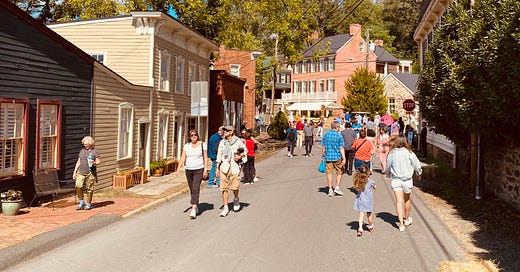October 2024
The village of Waterford in Virginia was founded by Quakers, on principles of peace.
That doesn’t mean life hasn’t happened.
“During the renovation, the owners found 120 snakes in the wall,” the historic homes tour guide tells us.
There’s a collective gasp.
“Black snakes,” someone behind me mutters.
We’re standing in a renovated eighteenth-century log house, the Griffith-Gover property on Main Street.
This 1792 property was part of the historic homes tour at this month’s Waterford Fair.
According to the Waterford Foundation, the spaces between the logs in early cabins were chinked with mud, moss, and, sometimes, animal hair, mixed together,
I’m staring at the two old walls in the Griffith-Gover lounge. The visual effect of the chinked logs is dramatic: layers of dark wood and the creamy-coloured filler, like a tiramisu with multiple layers of coffee-soaked cake and mascarpone.
I’m probably the only person here thinking about Italian puddings. This house tour seems to consist of people who already know their Virginia history.
How else would they know that the nests of vipers in the walls were black rat snakes?
How else would they have known that the shade of blue on the underside of the porch roof was called Haint Blue, and that it was used on porch ceilings all over the American South to ward off evil spirits?
How else would they know that Waterford chairs are recognizable for their splint-bottom seats, ladder backs and acorn finials?
I’m getting fixated on the Waterford chairs in this house. The owners collect them. They’re in every room. In the kitchen they hang from the walls.
The room we’re in now might – once upon a time –have sold the famous chairs. The factory where they were once made is very close to here, and this room was once a shop.
Waterford chairs are rare these days, and expensive. In this house there are even some rockers. The acorns beg to be stroked as you pass. They’re exquisite, carefully carved, like the country cousins of Faberge eggs.
Our historic home tour is part of a three-day village festival to celebrate 80 years of Waterford fairs.
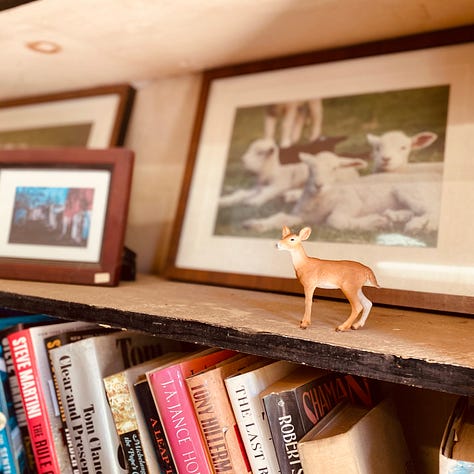
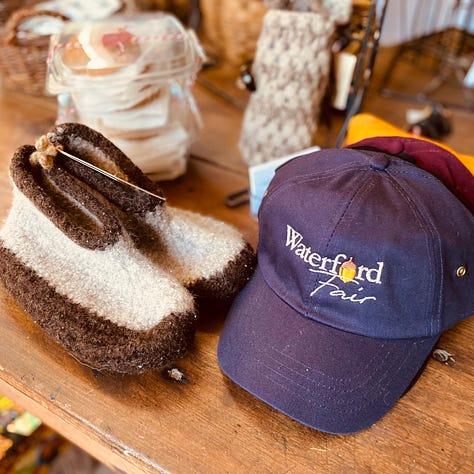
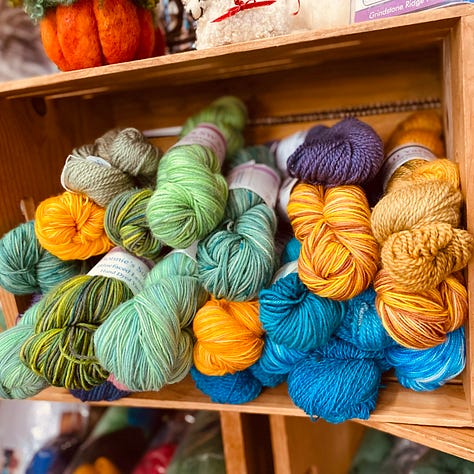
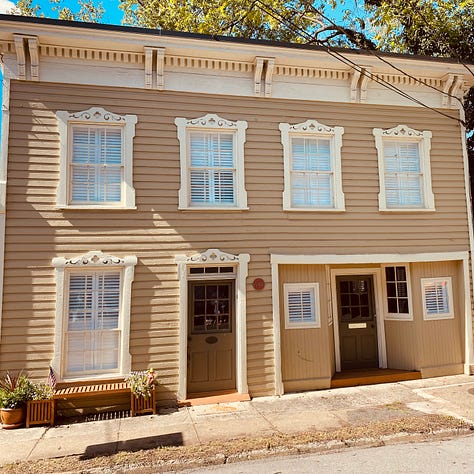
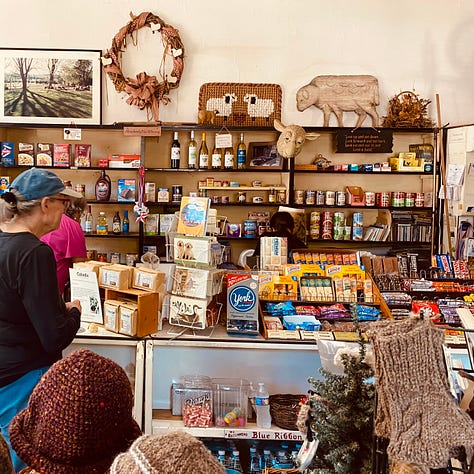
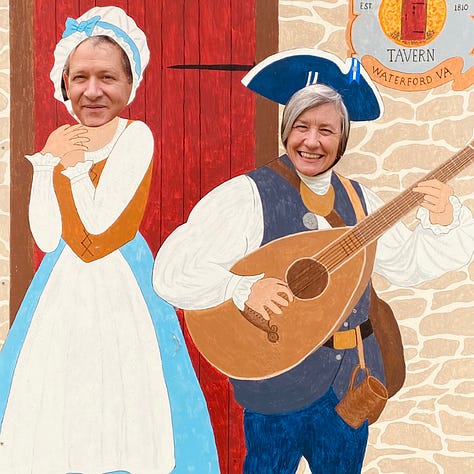
I’ve already had a gourmet coffee ice cream from Red Fox Creamery’s food truck. I’ve already bought a bottle of local vermouth. I almost bought a pair of handknitted mittens, but I was hot and queue was too long.
Up and down the streets, in the fields and in buildings and shops, there are all manner of sights to connect us to the history of the place: there’s blacksmithing going on under shade cloth; there’s an organ grinder on a street corner and at the old elementary school you can sit on a hay bale in the shade and listen to old-timey music with fiddlers and song.
Waterford is an hours drive north-west of Washington DC. It’s just half an hour from Harpers Ferry, at the confluence of the Potomac and Shenandoah Rivers, where the three states of Maryland, Virginia and West Virginia meet.
The village of Waterford is old, coming up for 300 years old. According to the Waterford Foundation Board and Staff, it was first settled in 1733, by Amos Janney. He was a Quaker. Other Quakers followed, to farm grain. The farmers needed a grist mill.
Still at the centre of Waterford is Janney’s Mill, named for the founder of the village.
At the fair, we’re handed baskets at the entrance to the mill. Inside, the three floors of the mill are packed with stallholders selling crafts like painted gourds, rag rugs and candles. Into my basket go Christmas tree decorations and a currant-flavoured beeswax lip balm.
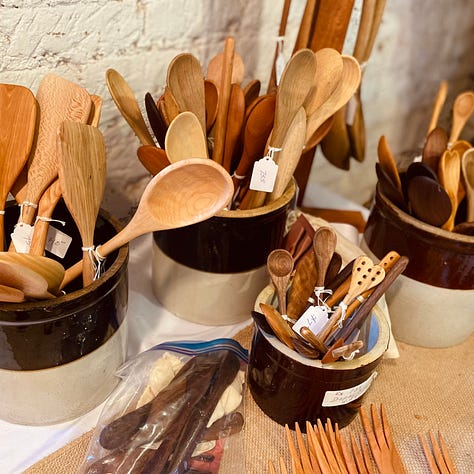
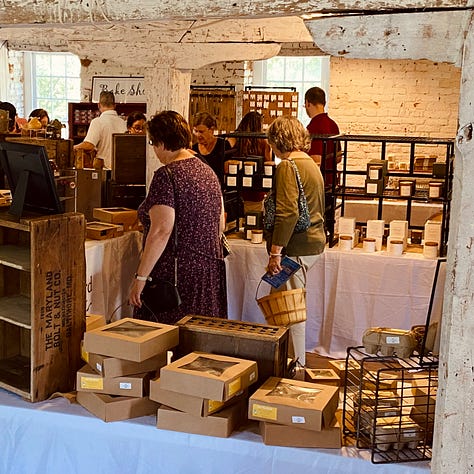
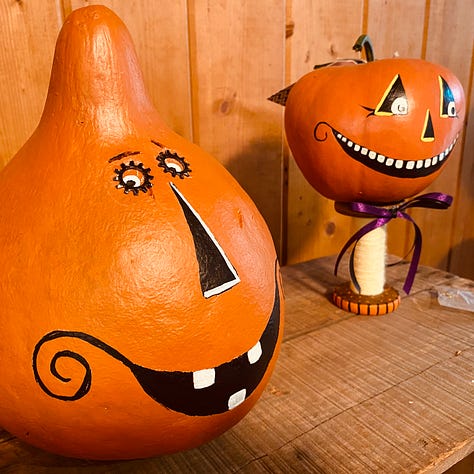
Outside, a magician in black clothing is setting up his props. He performs at the fair every year. He’s rumoured to be a retired CIA head.
In the late afternoon the worst thing happens: I get handed a gun.
I don’t want to touch the metal barrel, I never want to be anywhere near guns. But I’d asked for a photo of the guys dressed up as Civil War soldiers and they’d gamely shuffled into a line. Their uniforms looked they were made of wool and I felt bad for making them move about in the sun.
“Let’s have one with you in it!”
“Oh, no, I’m okay, thanks!”
“Come on, come in here!”
“No, really!”
This went on for a while, me sounding like Olivia Newton-John as Sandra Dee, and them being friendly and maybe – although this is unlikely – making the point that anyone who wants a picture of re-enactors better not be mocking.
So I stand front and centre, with the rifle barrel between two fingers, looking as awkward as I feel.
It’s important to notice that the uniforms here are blue.

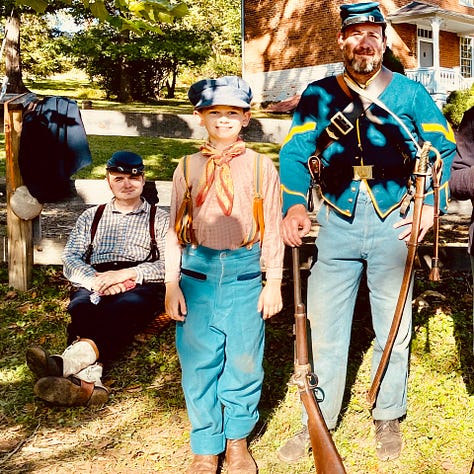
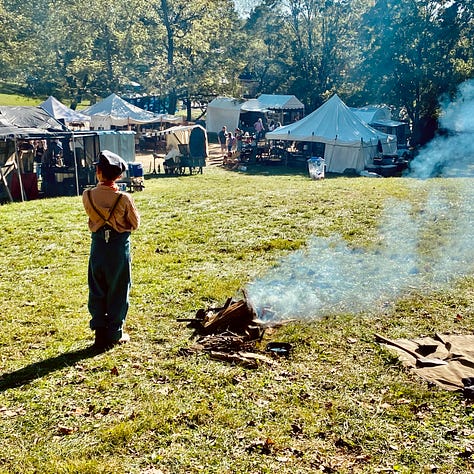
“By the time of the Civil War, most Waterfordians strongly opposed secession, a stand extremely unpopular among the majority in Loudoun County,” the Waterford Foundation Board and Staff tell us in the fair brochure.
In other words, Waterford was on the side of the North, not the South.
Soldiering runs contrary to Quaker principles of non-violence.
Not many Waterford residents took part in the Revolutionary War.
Unusually for pre-Civil War Virginia, Waterford had a thriving antebellum free Black community.
Waterford was not placed on train lines in the late 1800s so it’s remained a small village.
A small village it might be, but the history-minded fair is terrific. It attracts about 10 000 people a year.
We had a delicious microbrewery beer before we left, just as the smallest Civil War re-enactor was getting his campfire going.

